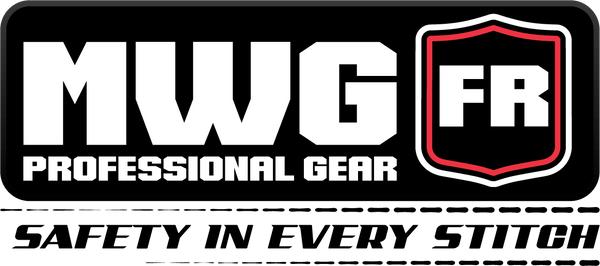Safety & Compliance
FR Clothing Safety and Compliance
Our mission is to provide professionals across industries the safety and comfort that complies with all safety standards and exceeds expectations. Engineering FR Clothing and flame-resistant fabrics to the highest standards ensures consistency and dependability when delivering safety apparel programs across industries.
The team at MWG Apparel is safety focused, performing third-party tests on each fabric, finished garments, layers and various clothing combinations. Safety is our highest priority and we strive to provide the most transparent documentation of all tests and data.
Each fabric has been third-party tested.
For safety across industries, we focus on four main areas: high-visibility, flash fire, electric arc, and layering.
Ensuring each fabric and finished garment is compliant within these categories is crucial to the safety of our customers.
High-Visibility
High-visibility safety apparel is designed to protect workers from moving vehicles and equipment, pedestrian traffic, limited sight lines, blowing dust or smoke, fog or steam, and night work.
There are two basic elements of high-visibility safety apparel, the class of apparel and the level of retroreflection.
The three classes of clothing are:
Level 1: Lowest recognized coverage and good visibility
Level 2: Moderate body coverage and superior visibility
Level 3: Full body coverage and visibility in poor light from a great distance
There are also three levels of retroreflection:
Level 1: High performance - visible in the dark from a moderate distance
Level 2: Highest performance - visible in the dark from a long distance
Level FR: Lower level retroreflective performance only for apparel designed to protect against exposure to flame and electric arc
There are three accepted colors for the background of a high-visibility garment: fluorescent yellow, orange or red. All three must be tested for chromaticity, colorfastness, minimum coefficient of retroreflection, and minimum luminance factor. Each must meet the minimum in each category to ensure safety and compliance.
Orange is used the background color for the majority of our FR Clothing, for its visibility and because it is widely recognized as a hazard identifier.
Electric Arc
An arc flash hazard is a potentially dangerous situation associated with the possible release of energy. A second degree burn is possible by an exposure of unprotected skin to an electric arc flash above an incident energy level of 1.2 calories per square centimeter.
Arc flash hazard analysis are conducted to determine the potential exposure to arc flash energy for the purpose of injury prevention and to determine safe work practices and the necessary levels of personal protective equipment (PPE). When it has been determined work will be performed within an arc flash boundary, the employer must document the incident energy exposure of the worker in calories per square centimeter. The incident energy exposure level is based on the working distance from the face and chest of an individual from a possible arc source. Arc-rated clothing and additional PPE must be used by the individual based on the incident energy exposure associated with the task.
The arc-rating of clothing is a value attributed to the materials that describes their performance to exposure to an electric arc event. The arc-rating is expressed in calories per square centimeter and is derived from the determined value of the arc thermal performance value (ATPV) or energy of breakdown threshold. These values are broken down into categories beginning at 4 calories of energy per square centimeter. The next category begins at 8 calories, then moves to 25 calories - or 25 ATPV and ends with 40 calorie protection or greater. Most tasks require a minimum of 8 calorie protection.
Testing for arc involves physical characteristics, colorfastness, initial flammability and flammability after wash.
Physical characteristics include testing the breaking load, tear resistance and seam slippage.
Colorfastness is determined by the laundering shade change, dry-clean shade change, and dimensional change.
The initial flammability is tested before washing and measures the char length on a garment or fabric after flame. The flammability is then tested again but after washing to determine performance after use.
Layering
MWG Apparel has performed numerous third-party tests of various layers and different combinations to determine the true ATPV and category of protection for our full collection.
MWG's FR Clothing is built with our proprietary fabrics, enabling the testing of nearly every combination available in our arc-rated clothing collection.
Testing the garments in the layers in which they are designed to be worn provides accurate data when entering a potentially hazardous situation. Establishing the true arc thermal performance value ensures workplace safety standards are being met and employers can confidently identify the protection being provided by the clothing on an individuals body.
